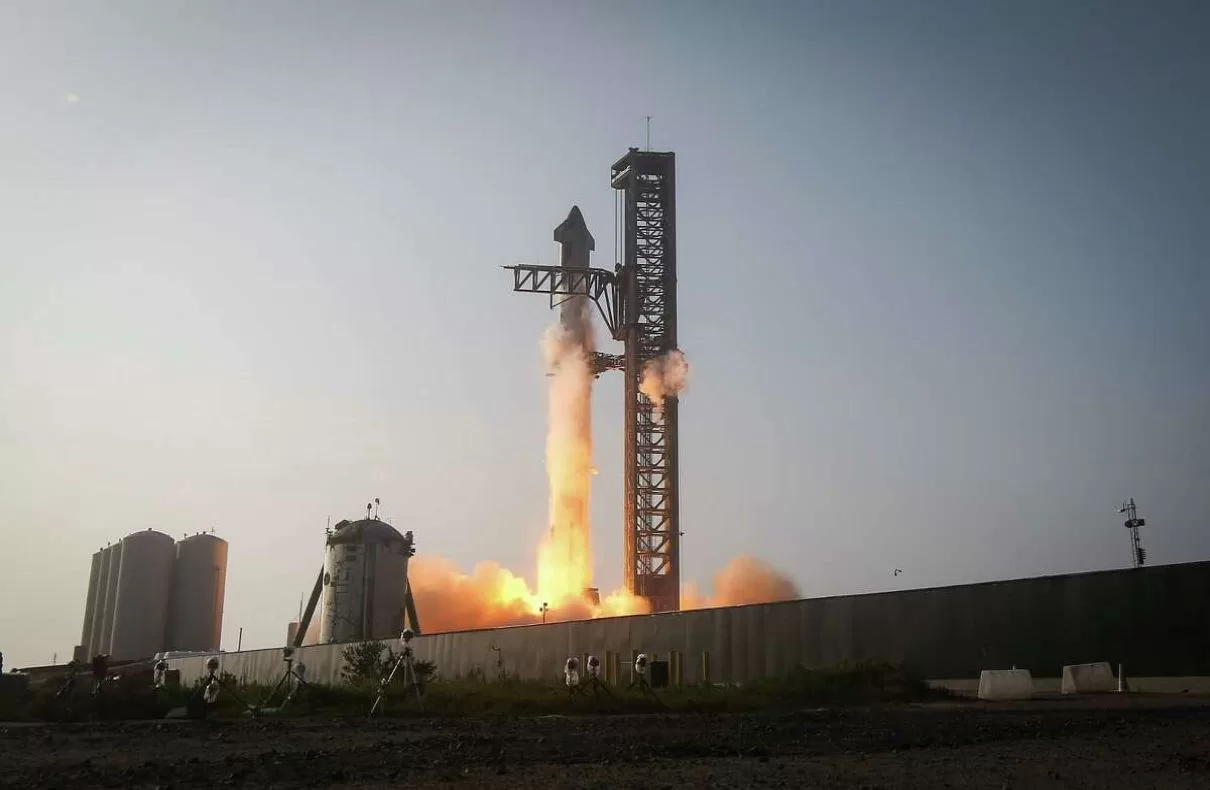The Federal Aviation Administration (FAA) granted SpaceX a license to launch its second test flight of the Starship rocket on Wednesday, November 15. The launch could happen as soon as Friday.
The 397-foot-tall (121-meter) Starship spacecraft and the Super Heavy rocket — jointly known as Starship — is expected to take off at 8 a.m.. The liftoff will be streamed online and viewable from the Cameron County Amphitheater and Event Center on the southernmost tip of South Padre Island, roughly 5 miles from the launch pad.
The FAA determined SpaceX met all safety, environmental, policy, and financial responsibility requirements. The rocket is critical for NASA’s Artemis program, but its previously failed launch raised safety and environmental concerns.
In April, the first launch attempt ended in a fiery explosion. With only 30 of its 33 engines operating, Starship flew to an altitude of 24 miles but failed to separate from its booster and began tumbling. It exploded after a 40-second delay in its flight termination system
The Starship spacecraft and its Super Heavy booster are at the center of SpaceX’s plans to eventually put humans on Mars, as well as aid NASA’s effort to return humans to the moon for the first time in more than 50 years.
Starship is intended to serve as the lunar lander for the Artemis III mission, currently slated for 2025. And if the test flight once again fails, it could bog down NASA’s lunar exploration timeline.
April’s inaugural integrated test flight of Starship and Super Heavy — the massive rocket expected to propel the spacecraft to orbital speeds — ended just minutes after takeoff when the vehicle began tumbling tail-over-head, forcing SpaceX to initiate self-destruct mode and explode both rocket stages over the Gulf of Mexico.
The rocket mishap’s potential impacts galvanized a group of environmental and wildlife advocates to file a May lawsuit againt the FAA, claiming the agency had failed to comply with federal environmental laws when it greenlit Starship’s first test flight.
William Gerstenmaier, SpaceX vice president for build and reliability, faulted regulators for holding up the second test flight, saying at a mid-October US Senate hearing, “It’s a shame when our hardware is ready to fly, and we’re not able to go fly because of regulations or review.”
The FAA finished its safety investigation in September, laying out 63 corrective actions for SpaceX. The agency then completed a safety review for SpaceX’s planned second test flight on October 31.
However, as part of its environmental review, the FAA set up a consultation with the US Fish and Wildlife Service under the Endangered Species Act. That process concluded on November 14, according to a statement from the agency, allowing FAA to issue the launch permit.
If the test mission once again fails, NASA’s aim to return humans to the moon’s surface could face delays as the space agency is racing other nations — including China — to build a permanent lunar settlement. The space agency has already warned that Starship might not be ready in time for a 2025 moon landing attempt.
Even if successful, SpaceX still has numerous technological hurdles to clear. The company must demonstrate the rocket can safely deliver a satellite or another payload to Earth’s orbit, as well as dock with a refueling tanker to top off its propellant while in orbit — a move that will be essential for getting the massive vehicle to the moon.
SpaceX CEO Elon Musk posted in August on social media that he foresees about a “50% probability of reaching orbital velocity,” though he cautiously added that “even getting to stage separation would be a win,” referring to the launch phase when the Super Heavy rocket detaches from the Starship spacecraft.
SpaceX may also face additional pushback from environmentalists ahead of — or in the wake of — the second launch attempt. The group of environmental and wildlife advocates that previously sued the FAA could still attempt to seek an injunction to stop the next launch.
When reached for comment last week, Jared Margolis, a senior attorney at the Center for Biological Diversity, said the nonprofit group had not decided whether to pursue that route, though it recognized the option was still on the table. It’s not clear, however, whether the group will have enough time to file the proper paperwork before SpaceX moves forward with the anticipated launch.

